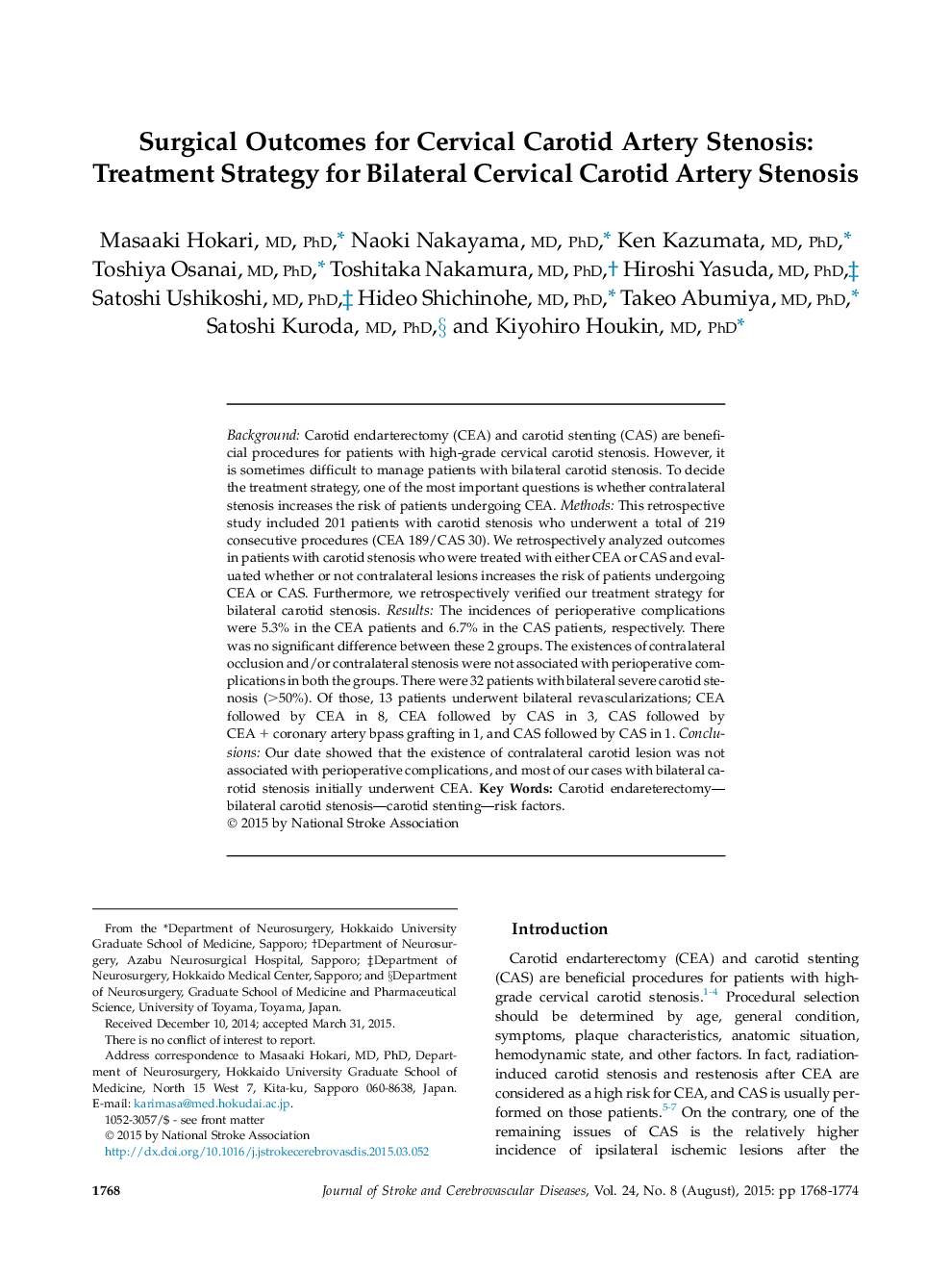| Article ID | Journal | Published Year | Pages | File Type |
|---|---|---|---|---|
| 5874950 | Journal of Stroke and Cerebrovascular Diseases | 2015 | 7 Pages |
BackgroundCarotid endarterectomy (CEA) and carotid stenting (CAS) are beneficial procedures for patients with high-grade cervical carotid stenosis. However, it is sometimes difficult to manage patients with bilateral carotid stenosis. To decide the treatment strategy, one of the most important questions is whether contralateral stenosis increases the risk of patients undergoing CEA.MethodsThis retrospective study included 201 patients with carotid stenosis who underwent a total of 219 consecutive procedures (CEA 189/CAS 30). We retrospectively analyzed outcomes in patients with carotid stenosis who were treated with either CEA or CAS and evaluated whether or not contralateral lesions increases the risk of patients undergoing CEA or CAS. Furthermore, we retrospectively verified our treatment strategy for bilateral carotid stenosis.ResultsThe incidences of perioperative complications were 5.3% in the CEA patients and 6.7% in the CAS patients, respectively. There was no significant difference between these 2 groups. The existences of contralateral occlusion and/or contralateral stenosis were not associated with perioperative complications in both the groups. There were 32 patients with bilateral severe carotid stenosis (>50%). Of those, 13 patients underwent bilateral revascularizations; CEA followed by CEA in 8, CEA followed by CAS in 3, CAS followed by CEA + coronary artery bpass grafting in 1, and CAS followed by CAS in 1.ConclusionsOur date showed that the existence of contralateral carotid lesion was not associated with perioperative complications, and most of our cases with bilateral carotid stenosis initially underwent CEA.
